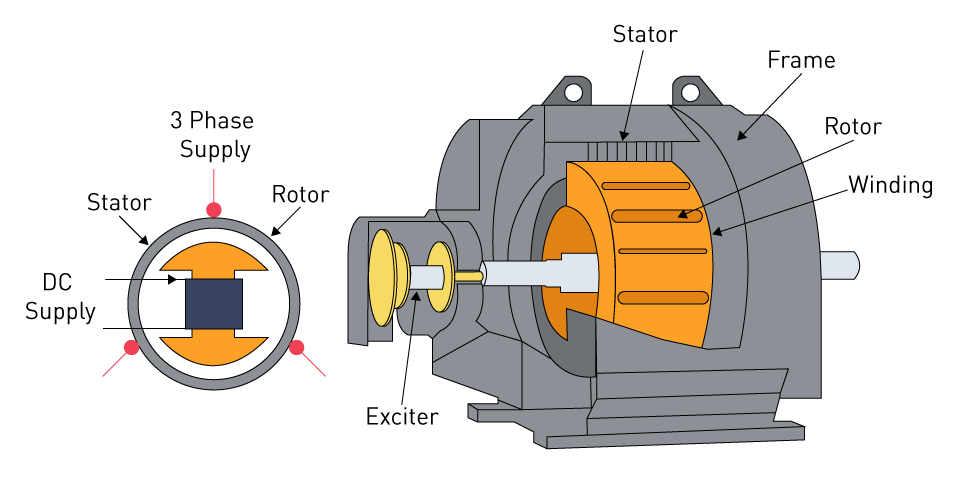How electromagnetic interference from AC motors is generated
Electromagnetic interference from AC motors is mainly caused by the following factors:
- Power-line interference: AC motors are powered from the mains. Current variations generate changing electromagnetic fields on the power lines, producing interference signals that can propagate to other equipment or systems via the power lines.
- Conductor radiation: Internal conductors and windings in the motor produce radiated magnetic fields when currents change. These fields can propagate through air and affect nearby equipment or systems.
- Arcing from switching operations: Motors typically use switching devices for start, stop, or control. Switching can produce arcing, which generates high-frequency interference.
- Magnetic coupling: The motor's internal magnetic fields can couple to nearby electronic devices or systems, transmitting unwanted interference signals via magnetic coupling.
To reduce EMI from AC motors, consider these measures:
- Use filters: Installing filters on the motor power lines can effectively suppress high-frequency interference on the supply lines and reduce propagation to other devices.
- Optimize grounding: Design proper grounding for the motor and surrounding equipment to ensure good ground connections and reduce interference loop paths.
- Shielding: Use enclosures, metal housings, or shield covers around the motor to reduce magnetic radiation and electromagnetic leakage.
- Use interference-resistant equipment: Select motors and related devices that meet EMI immunity requirements to reduce the impact of interference on other equipment.
Analysis and mitigation should be tailored to the specific installation to ensure correct motor operation while minimizing EMI.
Adverse effects caused by electromagnetic interference
Electromagnetic interference (EMI) can have several adverse effects on electronic devices and systems. Common consequences include:
- Data errors or loss: EMI can cause errors during data transmission. In digital communications, computer networks, and storage systems, this can lead to data loss, corruption, or misinterpretation.
- System crashes or failures: Strong EMI can cause electronic systems to crash or fail. For example, computers may freeze or display system errors, and control systems may malfunction, creating equipment failures or safety risks.
- Unstable operation or degraded performance: EMI can cause unstable operation or reduced performance of devices and systems. Wireless devices may experience signal loss or reduced communication quality, leading to interruptions or increased latency.
- Incorrect actions or control errors: EMI can cause devices to receive erroneous commands or signals, resulting in incorrect actions or false alarms. This can be serious for critical systems or automated control systems.
- Measurement errors: EMI can affect the accuracy and reliability of instruments or sensors, producing biased or incorrect measurements.
- Reduced equipment lifespan: Long-term exposure to EMI can damage or accelerate aging of internal components, shortening device lifetime.
The severity of these effects depends on EMI strength, frequency range, and the sensitivity of affected equipment. Appropriate shielding, filtering, grounding, and impedance matching are needed to protect electronic devices and systems from EMI.
 ALLPCB
ALLPCB








